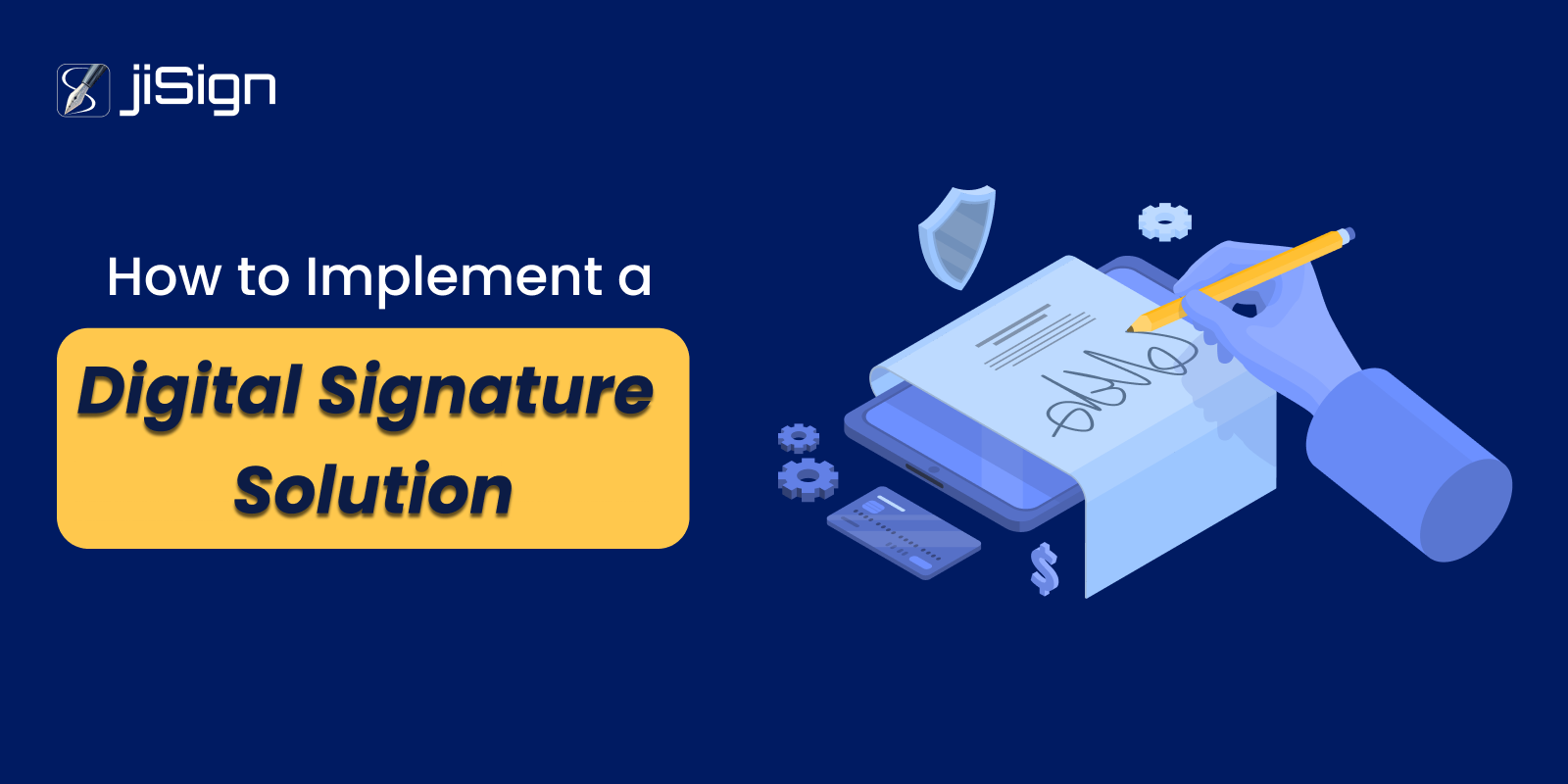Implementing a digital signature solution is a strategic move for organizations looking to enhance their document management processes, improve security, and streamline workflows. Digital signatures provide a secure and efficient way to sign documents electronically, ensuring authenticity and integrity. This blog will guide you through the steps to successfully implement a digital signature solution, covering everything from understanding the technology to selecting the right provider and integrating it into your existing systems.
Understanding Digital Signatures
Digital signatures are cryptographic equivalents of handwritten signatures, providing a way to verify the identity of the signer and ensure that the document has not been altered after signing. They rely on Public Key Infrastructure (PKI), which uses a pair of keys: a private key known only to the signer and a public key shared with anyone who needs to verify the signature. This technology ensures that digital signatures are secure, legally binding, and compliant with regulations such as eIDAS in Europe or ESIGN in the United States.
Steps to Implement a Digital Signature Solution
1. Assess Your Needs
Before diving into implementation, it’s crucial to assess your organization’s specific needs regarding digital signatures. Consider the following questions:
What types of documents will require signatures?
How many users will need access to the digital signature solution?
What level of security is necessary for your documents?
Are there specific compliance requirements your organization must meet?
Understanding these factors will help you choose the right solution that aligns with your organizational goals.
2. Choose the Right Digital Signature Solution
Selecting a digital signature solution such as jiSign involves evaluating different providers based on several criteria:
Security Features: Ensure that the solution employs strong encryption methods (e.g., AES-256) and secure transmission protocols (SSL/TLS) to protect sensitive information.
Integration Capabilities: Look for solutions that can integrate seamlessly with your existing systems, such as CRM platforms, document management systems, or ERP software.
User Experience: A user-friendly interface is essential for ensuring that all employees can easily navigate and use the system without extensive training.
Compliance: Confirm that the solution complies with relevant regulations and standards, including ISO certifications and industry-specific requirements.
Cost: Evaluate pricing models to find a solution that fits within your budget while meeting all necessary features.
3. Plan for Implementation
Once you have selected jiSign as a digital signature solution, create an implementation plan. This plan should outline:
Timeline: Establish a timeline for each phase of implementation.
Resources Needed: Identify team members who will be involved in the process, including IT staff, compliance officers, and end-users.
Training Requirements: Determine what training will be necessary for staff to effectively use the new system.
4. Integrate with Existing Systems
Integration is a critical step in implementing a digital signature solution. Work closely with your IT team to ensure that the new system connects smoothly with existing applications. This may involve:
API Integration: Utilize application programming interfaces (APIs) provided by your digital signature vendor to connect with other software.
Data Migration: Transfer existing documents into the new system while maintaining their integrity and security.
Testing: Conduct thorough testing of the integrated system to identify any issues before going live.
5. Train Your Team
Training is essential for successful implementation. Provide comprehensive training sessions for all users who will interact with the digital signature solution. Training should cover:
How to create and manage digital signatures
Best practices for document handling
Security protocols to follow when using the system
Troubleshooting common issues
Consider offering ongoing support resources such as user manuals or helpdesk access for questions that arise after training.
6. Monitor and Optimize
After implementation, continuously monitor the use of your digital signature solution. Gather feedback from users about their experiences and identify any areas for improvement. Regularly review security measures and compliance adherence to ensure that your organization remains protected against potential threats.
7. Ensure Legal Validity
To maintain legal validity, ensure that your digital signature solution adheres to relevant laws and regulations governing electronic signatures in your jurisdiction. This may include:
Compliance with eIDAS regulations in Europe or ESIGN in the U.S.
Adhering to industry-specific standards such as HIPAA for healthcare or FINRA regulations for financial services.
Maintaining compliance not only protects your organization but also builds trust with clients and partners.
Conclusion
Implementing a digital signature solution on jiSign can significantly enhance your organization’s efficiency, security, and compliance posture. By carefully assessing your needs, choosing the right provider, planning for integration, training your team, and monitoring usage, you can ensure a smooth transition to electronic signatures. As businesses continue to embrace digital transformation, adopting innovative solutions like digital signatures will be crucial for staying competitive in today’s fast-paced environment.
By following these steps, organizations can successfully implement a digital signature solution that meets their unique needs while providing enhanced security and efficiency in document management processes. Embrace this opportunity to streamline workflows and improve operational efficiency through effective use of technology. Contact us today.











Share this post on: